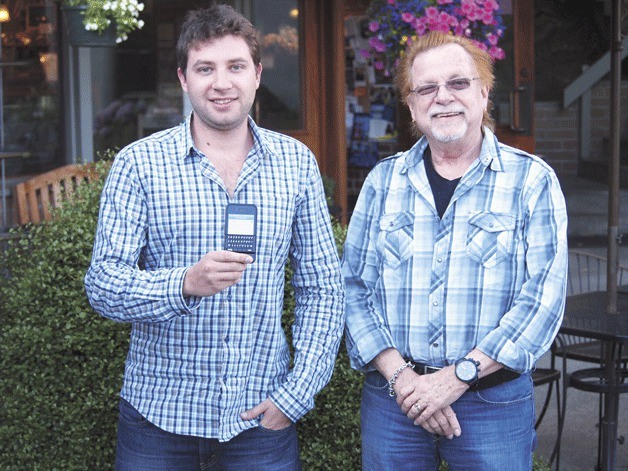The iPhone is known to draw a considerable crowd, both as users and as eager buyers who line up to purchase the newest model.
The excitement for some users, however, ends when they try to send a text message or write an email — a task that can prove rather difficult on a small keyboard through the glass screen of the iPhone.
That is, until now.
Robert Solomon and his son Cody, are about to release a product that will put an end to frustrating typos that come from plugging in letters on a glass screen.
“There is a segment of the population who cannot tolerate typing on glass,” Robert said. “If you are going to do what lawyers and business people do and type out an email, you just aren’t going to do that with a glass keyboard.”
Cody agrees.
“I was one of those guys who waited in line for the first iPhone,” Cody said, a 2003 graduate from Bainbridge High School.
But the iPhone that Cody had envisioned and eagerly awaited wasn’t as difficult to type on.
The “Spike” is a keyboard made for the iPhone similar to other smart phones such as the Blackberry. The case/keyboard combo places a physical keyboard directly over the screen of the iPhone where the on-screen letters normally appear.
Two models are currently designed, the Spike 1 and the Spike 2. The difference being that the Spike 2 can more easily swing the keyboard out of the way to the back of the cell phone case.
Another option will be a limited edition aluminum constructed Spike.
The Spike uses no batteries, no bluetooth to communicate with the iPhone, and does not draw energy from the phone. Yet, somehow each letter makes it precisely from the keyboard to the iPhone.
The father and son duo won’t say exactly how it works, aside from “electrically.”
For Robert, a career keyboard designer, it wasn’t easy to come up with. It took two years to design the Spike.
When a prototype of Spike first was reviewed by a handful of bloggers, there was a misconception that the keyboard simply worked by pressing the desired button with a finger, and a peg on the other side of the button would press the glass screen. The problem with that idea is that it doesn’t work.
“You can’t put 30 conductive buttons on the screen,” Robert said. “It just won’t handle it.”
But his keyboard does work. What Robert has invented is an iPhone keyboard the world has never seen, but has wanted.
Previous keyboards available for the iPhone have been bulky attachments to its back requiring bluetooth and a power source, and even full sized keyboards with a stand for the phone. The Spike, on the other hand, is discrete.
The Solomon’s company, Solomatrix, started a Kickstarter page to initially help raise funds for the Spike project — a website for business startups that accepts donations or pre-orders for new products such as Spike. The keyboard proved such a successful idea that the company had no difficulty surpassing their goal of $75,000.
Now Solomatrix expects to begin production of the Spike toward the end of August. Soon after, the Spike will be aimed at cell phone kiosks, Best Buys and other iPhone retailers. Solomatrix plans to start the Spike in the $25 range.
When the anticipated iPhone 5 is released, Solomatrix will have a Spike ready for that as well.


